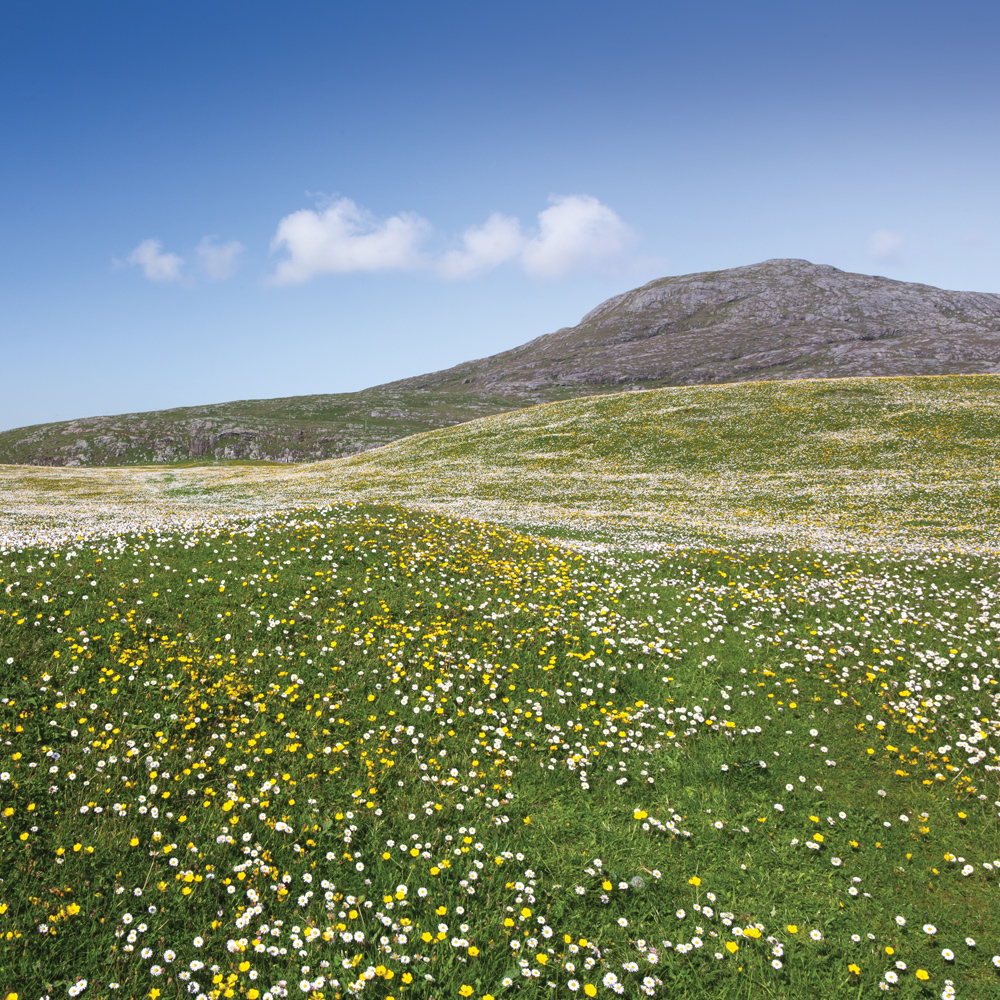mach·air | /ˈmæk.ər/

Machair is Scottish Gaelic for fertile plain – specifically the unique ecosystem of low-lying grasslands found only on the north-west coastlines of Ireland and Scotland although it is sometimes used as an umbrella term for both the pasture and the adjacent dune systems.
Machair is one of the rarest environments on Earth, formed by a fragile balance of environmental conditions, wildlife, and crofting (traditional small-scale farming). Calcareous shell sand blown inland from the dunes creates an alkaline soil that, together with just the right amount of wind, rain, and seasonal grazing, forms the machair.
It supports a wealth of wildflowers and is an important habitat for many birds and insects. From mid May until the end of summer, stunning carpet blooms paint the land. Predominantly white during spring, these give way to yellows in high summer and red and purple hues as the season draws to a close. Common flowers such as daisies, birdfoot trefoil, and red clover share the pasture with rarities such as the Irish lady’s tresses and lesser butterfly-orchids.
The endangered northern colletes bee and the great yellow bumblebee thrive in the machair. Birdspotters might spy twites, dunlins, common redshanks, and ringed plovers. The elusive corn crake visits over the summer – it is rarely seen but its rasping call is notorious for ruining many a good night’s sleep.
Introduction Aeolian Alpenglow
Benthos Crepuscular Crispate Crown shyness
Desire lines Dreich Endragoned Edgelands
Frondescence Fumarole Gluggaveður Gossamer
Karst Komorebi Lawrence Long acre
Machair Monkey’s wedding Moonglade
Psithurism Quartz Rakuyou Roaring forties
Snag Soft estate Specular, diffuse and pellucid
Spoondrift Steam fog Swash zone Sylvan
Tellurian and thalassic Terracettes Uliginous